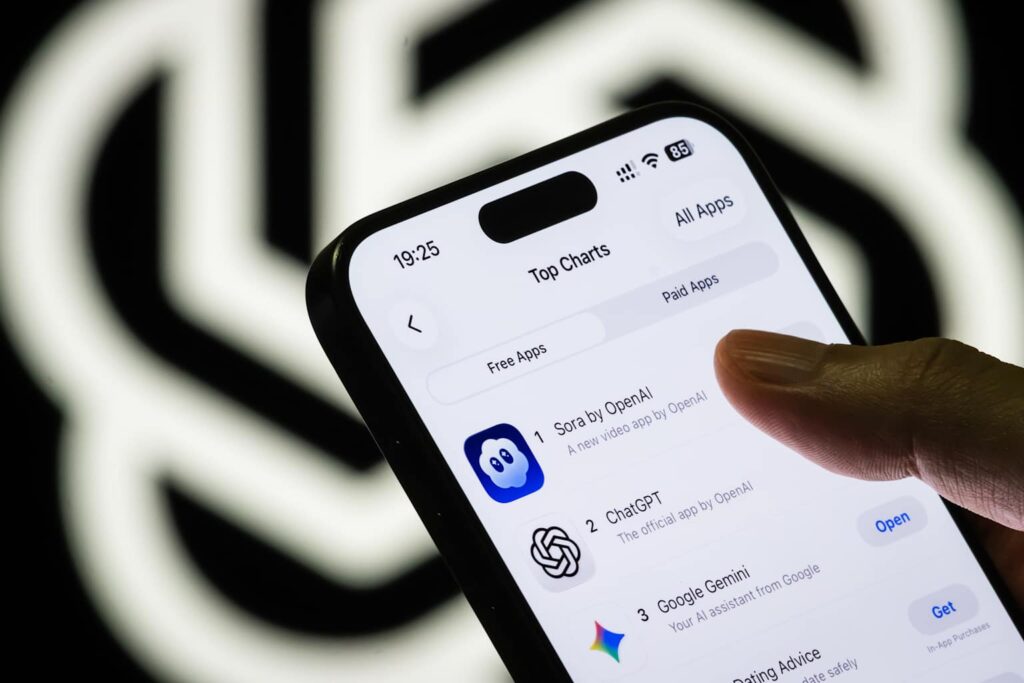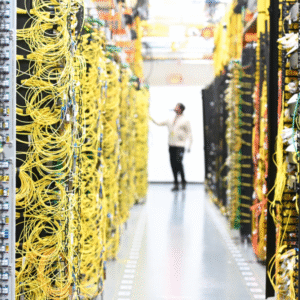OpenAI has officially shifted its viral video generation app, Sora, from a fully free experience to a partially paid model — a move that marks one of the company’s most significant monetization pivots since ChatGPT Plus. The decision follows what OpenAI executives described as “completely unsustainable economics” behind the app’s massive GPU demands.
Announced Thursday by Bill Peebles, head of the Sora project, the change now allows users to purchase bundles of 10 extra video generations for $4 via Apple’s App Store once they exceed their daily free limit. The pricing applies to all user tiers — including Free, Plus, Teams, and Pro accounts.

Why OpenAI Had to Act: “We Were Wrong About Usage Limits”
When Sora first launched as a standalone app on September 30, 2025, it quickly became a global sensation. With over 2 million downloads in just a few weeks across the U.S. and Canada, the app soared to the #1 spot on Apple’s App Store. Users marveled at its ability to generate cinematic-quality videos from text prompts — something no other platform had achieved at this scale.
But popularity came with a steep price.
“We have been quite amazed by how much our power users want to use Sora, and the economics are currently completely unsustainable,” Peebles admitted in a post on X (formerly Twitter).
“We thought 30 free gens/day would be more than enough, but clearly we were wrong!”
Currently, free, Plus, and Teams users can create up to 30 videos per day, while Pro subscribers get 100 free generations daily. However, OpenAI hinted these numbers will soon drop. Peebles added that GPU limitations — the powerful graphics processors responsible for rendering AI videos — are driving this urgent shift.
“Eventually we will need to bring the free gens down to accommodate growth (we won’t have enough GPUs to do it otherwise), but we’ll be transparent as it happens,” he wrote.
GPU Costs and the Push Toward Monetization
Each Sora video takes considerable GPU power, often requiring advanced chips like NVIDIA’s H100 to render lifelike visuals in seconds. Analysts estimate that a single Sora video could cost several cents to a few dollars in compute time depending on complexity — an impossible cost to sustain under a free model.
By introducing Sora credits at $4 per 10 videos, OpenAI aims to recover a portion of those GPU expenses while maintaining accessibility for casual users. The move also helps balance usage across regions and prevent server overloads caused by heavy demand.
If you want to try out the latest version of Sora, you can download it here:
👉 Get Sora on the App Store
Building a “New Sora Economy”
Interestingly, this update isn’t just about cost control. Peebles outlined a broader vision called the “New Sora Economy”, which will eventually allow creators and rights holders to monetize their content within the platform.
“We imagine a world where rightsholders have the option to charge extra for cameos of beloved characters and people,” he said.
“We will soon pilot monetization, prioritizing people and companies who got onto the platform early.”
This system would enable creators to set fees for using copyrighted characters, brands, or celebrity likenesses in user-generated videos. In return, OpenAI plans to share a portion of revenue with original rights holders — a potential step toward ethical AI content generation.
However, the company faces hurdles. Earlier this week, Cameo, the celebrity video platform based in Chicago, filed a trademark infringement lawsuit against OpenAI, claiming Sora’s “Cameo” feature — which allows users to insert famous personalities into videos — could mislead consumers and harm its brand. Cameo CEO Steven Galanis called the issue an “existential threat” to their business model.
From Creativity to Commerce: Sora’s Next Chapter
Despite legal turbulence, OpenAI seems committed to scaling Sora responsibly. The company has confirmed that paid tiers will continue to evolve, and future updates may include premium video rendering modes, commercial licensing options, and creator payouts for viral clips.
The Sora team also hinted that AI content verification tools are in development to ensure transparency in videos that feature real-world likenesses — a step that could ease regulatory concerns and support fair use.
For creators, the change is a double-edged sword: while fewer free generations might sting, monetization could unlock a sustainable income stream for digital artists, filmmakers, and brand partners.
What This Means for AI Video Generation
OpenAI’s decision signals a major turning point for AI-generated media. As GPU costs soar and user demand skyrockets, even giants like OpenAI must rethink how to fund innovation sustainably. The paid credit model could set the template for how other AI video tools — including Runway, Pika Labs, and Synthesia — approach monetization in the coming year.
In short: the AI video gold rush isn’t slowing down, but it’s starting to get a price tag.
Reference Links
- Yahoo News – OpenAI now sells extra Sora credits for $4
- India Today – OpenAI’s Sora app introduces paid model
- X Post by Bill Peebles – Announcement on Sora update
- Getty Images – Sora product visuals and promotional materials









